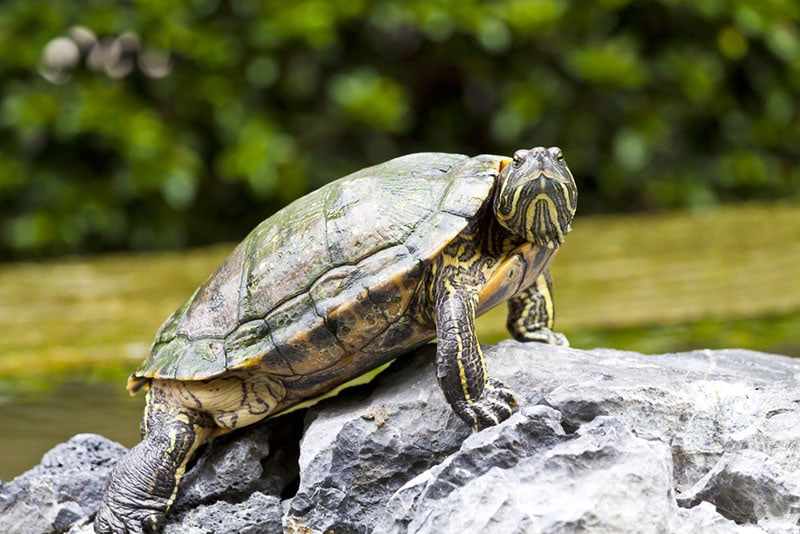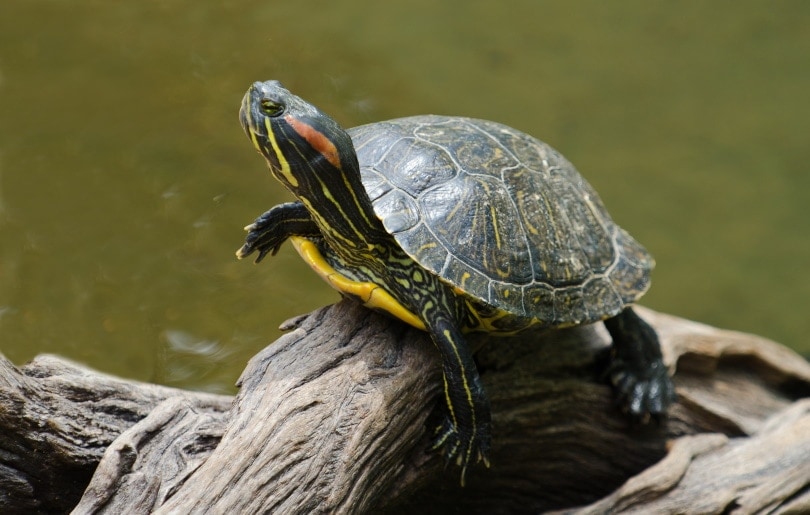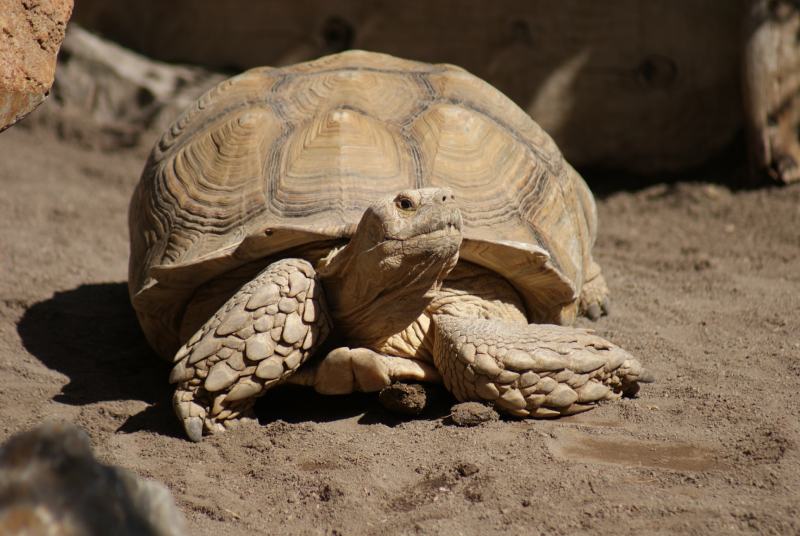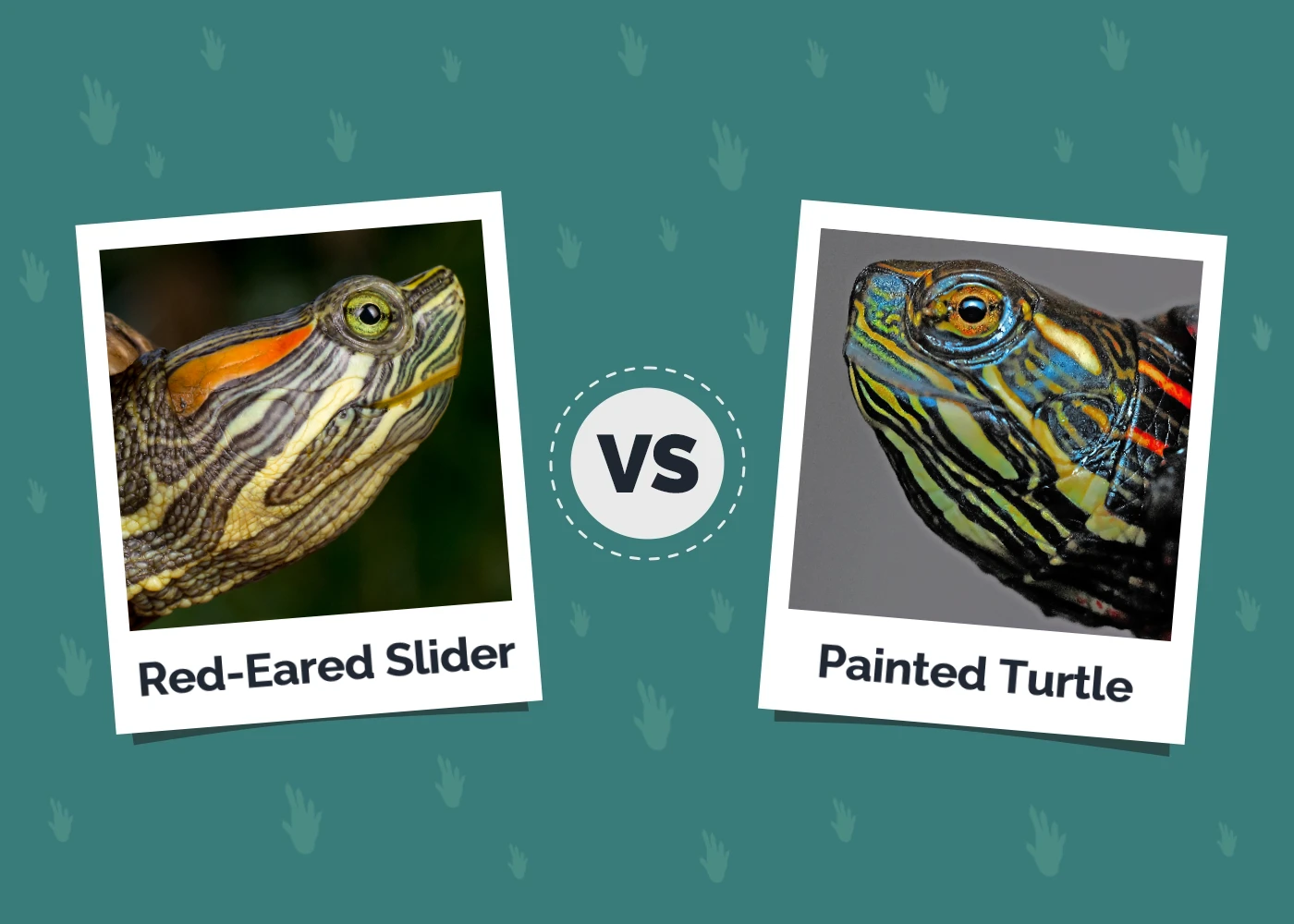What Do Turtles Eat? Vet Approved Nutrition Guide
Updated on

During the spring and summer, you might start spotting wild turtles roaming in your yard, if you’re lucky enough to live near a turtle-friendly habitat. Maybe you’ve wondered if you could give the turtle a snack to encourage them to keep coming back. Perhaps you’re planning to bring home a pet turtle of your own and you’re simply looking for information about how to feed your turtle. Here’s what you need to know about turtle nutrition.

The Turtle Species Matter
There isn’t a one-and-done answer when it comes to what turtles eat. There are dozens of species of turtles, and their dietary needs vary. Aquatic turtles and land turtles typically have different dietary needs. Not only can turtles have different nutritional needs, but tortoises are turtles as well. “Turtle” is an umbrella term that includes tortoises, as well as terrapins.
As a basic guideline, most people follow these broad classifications, but they are all Turtles:
| Tortoises: |
land-dwelling, domed shell, stumpy feet, most can retract head and limbs into shell
|
| Terrapins: |
freshwater aquatic turtles, flatter shells, webbed feet, most can retract head and limbs into shell
|
| Turtles: |
sea turtles – have flippers, cannot retract head or limbs into shell, majority of life spent in the ocean
|
If you’re planning to feed a wild turtle in your yard, you need to properly identify the species first. Consider reaching out to local organizations to help you with an ID. Also, make sure to check the laws in your area. It is illegal to feed or interact with some types of wildlife in some areas, and many people will recommend that you not feed wild animals at all since this can reduce their natural fear of humans and put them in dangerous situations.

What Do Common Turtles Eat?
There are a handful of turtles that are relatively common, whether you spot them in the wild or in a pet store. Keep in mind that you should never take a turtle from the wild and keep it as a pet. Not only is this often illegal, but it can be a cruel, stressful situation for the turtle.
Common Box Turtle
These turtles are omnivores, with up to 90% of their diet consisting of vegetables and flowers. Most of the rest of their diet is made up of fruit and berries, although they will also eat bugs and worms.
Red-Eared Slider
These aquatic turtles are omnivores, and they’ll eat just about anything that’s put in front of them. In the wild, they eat things like aquatic plants, dead fish and amphibians, and small live fish. There are a variety of fruits and vegetables that they can be fed in captivity, as well as turtle pellets.

Spiny Softshell Turtle
These are also aquatic turtles, but they are carnivorous. They will really eat just about anything they can get into their mouth. Aquatic insects, fish, crawdads, and amphibians are all fair game. These turtles hide themselves in the mud underwater with only their head sticking out, simply waiting for prey to swim past.
Alligator Snapping Turtle
Like the previous aquatic turtle, alligator snapping turtles are carnivorous. Not only are they carnivores, but these turtles are extremely dangerous and can easily bite off fingers. They will eat food that they have scavenged, as well as hunted, and they will sometimes eat plant matter. Their size and aggression help to feed their big appetite, and they’re known to eat fish, amphibians, other aquatic animals, and even small mammals.
River Cooter
The river cooter is an omnivorous aquatic turtle. In captivity, they eat turtle pellets, crickets, leafy greens, and mealworms. In the wild, they eat aquatic and terrestrial insects, larvae, worms, small fish, and even mice and other small mammals.

Gopher Tortoise
This land-dwelling tortoise is primarily herbivorous. They eat a variety of foraged foods, including fruits and berries, grasses, leaves, and legumes. They have also been noted to consume the bones of dead animals, which is believed to be for calcium.
African Spurred Tortoise
Also known as the sulcata tortoise, this terrestrial tortoise is an herbivore. In the wild, flowers, weeds, grasses, and cacti pads. In captivity, they are fed a diet that is made up of about 90% of grass and hay. The rest of their diet consists of veggies, cacti pads, and flowers.
In Conclusion
As you can see, there is a wide variety of foods that turtles can eat, whether they’re in their natural environment or captivity. If you are interested in getting a turtle as a pet, it’s extremely important that you educate yourself on the specific needs of the species you are bringing home, including their dietary needs. An inappropriate diet can be deadly for turtles.
It is also worth noting that if you find yourself living in turtle territory and fancy planting strawberry plants for some home-grown sweetness, you might want to consider using hanging baskets if you want to actually get to eat any fruit!
Featured Image Credit: coloursinmylife, Shutterstock













